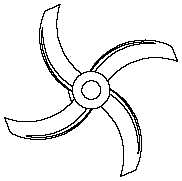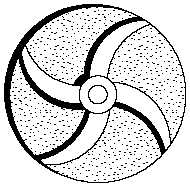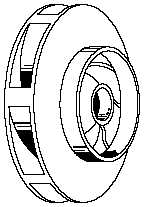CENTRIFUGAL PUMPS
DOE-HDBK-1018/1-93
Pumps
Impellers can be open, semi-open, or enclosed. The open impeller consists only of blades
attached to a hub. The semi-open impeller is constructed with a circular plate (the web) attached
to one side of the blades. The enclosed impeller has circular plates attached to both sides of the
blades. Enclosed impellers are also referred to as shrouded impellers. Figure 5 illustrates
examples of open, semi-open, and enclosed impellers.
Figure 5 Open, Semi-Open, and Enclosed Impellers
The impeller sometimes contains balancing holes that connect the space around the hub to the
suction side of the impeller. The balancing holes have a total cross-sectional area that is
considerably greater than the cross-sectional area of the annular space between the wearing ring
and the hub. The result is suction pressure on both sides of the impeller hub, which maintains
a hydraulic balance of axial thrust.
Centrifugal Pump Classification by Flow
Centrifugal pumps can be classified based on the manner in which fluid flows through the pump.
The manner in which fluid flows through the pump is determined by the design of the pump
casing and the impeller. The three types of flow through a centrifugal pump are radial flow, axial
flow, and mixed flow.
Radial Flow Pumps
In a radial flow pump, the liquid enters at the center of the impeller and is directed out
along the impeller blades in a direction at right angles to the pump shaft. The impeller
of a typical radial flow pump and the flow through a radial flow pump are shown in
Figure 6.
ME-03
Rev. 0
Page 4






